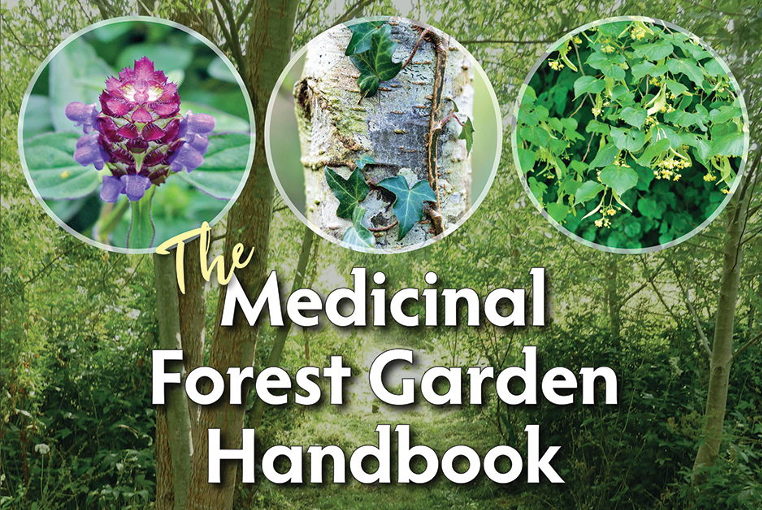On a walk around fields local to our house, the late Spring bounty of hedgerows was just starting to reveal itself. Elder blooms abound. At home, after sunset I started reading Anne Stobart’s The Medicinal Forest Garden Handbook. The book is sizeable at 288 pages and quite in depth – there are detailed profiles of 40 trees and shrubs.
I believe in the need for diversity in our diet, with the plentiful array of edible plants providing us with life for our bodies. Trace elements, wild yeasts as well as the more oft considered vitamins and minerals.
I so often tell others that the reason I grow food is because I love eating. But let us not lost sight of the fact that ‘food is medicine and medicine is food’. We can brings plants together and manage them in a forest garden, to provide for ourselves, our families, communities and customers.
Many of the plants in my forest garden and some of the plants I see on my local walks appear in the pages of The Medicinal Forest Garden Handbook. Anne Stobart with her many years of lived experience from Holt Wood, sheds new light on these commonplace plants; raspberry for leaf tea, yarrow for stopping a nosebleed, ash bark was once used to treat fevers.
It is good to be reminded of the many other functions and interactions plants have with our bodies. (I shall say the same as the author does, here: this is “not intended to replace professional advice from a qualified herbal or medical practitioner. Do not attempt to diagnose major health problems and treat yourself or others without professional advice.”).
Then, there are also those plants I found myself ‘Oohing’ at. Not ones typically referenced anywhere else on my permaculture bookshelf. I was interested to discover Siberian Ginseng, which can be used to help the body with stress and exhaustion. Since first looking through the handbook, I’ve found myself thinking of plants as healers more often. New yields from my garden and landscape imagined. Thank you to the author and publishers for lighting that spark.
I was pleased to be able to give a copy of the book to my community gardening friend Ali, she shares her thoughts on it below.
 Hazel, perennial kale and annual veg beds in Ali’s garden
Hazel, perennial kale and annual veg beds in Ali’s garden
This book is aimed at those planning a medicinal forest garden for self-sufficiency or profit. This attractive, well presented book with lots of photographs uses clear, plain language.
I like the chapter on making herbal preparations – it’s very useful and has the best explained recipes that I have come across! It explains the reasons and advantages of different types of preparations. The recipes are examples of how to use each method of preparing herbs.
The most interesting section for me is the Directory of Medicinal Trees and Shrubs. It has descriptions, details on cultivation, propagation, harvesting, therapeutic uses and constituents, and commerce for each tree/shrub. Everything you need to know in one place. I grow a mixture of annuals and perennials in my garden, with edible/useful purpose. I have a number of trees for a small garden, so use the stacking principle to make use of all the storeys. Reading this book has given me inspiration for plants I would like to add and I have discovered some medicinal uses for some plants that I already have.
The chapter about herbal preparation techniques has some fun sounding techniques that I’d like to try: making pills with powders and honey, making a ‘hydrosol’ in a pan (distilling herbs into water and making a small amount of essential oil), and making my own incense sticks.
I found the glossary of medicinal herbal and horticultural words that are commonly used very useful, and it filled some gaps in my knowledge. The other section I know that I will find useful time and time again is in the appendix, where there is an extensive table of herbaceous medicinal plants that would be grown in the understorey or open areas in a forest garden.
I think this book is good value and a really comprehensive place to start if you are planning a medicinal forest garden. Some good companions to it might be an in-depth herbal medicine book, a plant ID book (although photos are very good in this book), and a permaculture design book.





